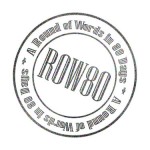John Gardner once said that there are two types of stories in literature:
(1) Man goes on a journey.
(2) Stranger comes to town.
While it might seem simplistic to think that all stories in literature boil down to these two categories, but let’s look a little closer, shall we?
Examples
- Odyssey (Homer) – clearly (1), as the story revolves around Odysseus’ journey but also (2) when you consider all that happens when he shows up back in Ithaca.
- Feed (M.T. Anderson)- definitely fits category (2), but we can also view the book as a journey into understanding the feed (1).
- The Wizard of Oz (L. Frank Baum) – again, it appears on the surface to be about a journey (1) but if we look more closely, we realize that it also fits category (2), in that Dorothy is the stranger that comes to the “town” of Oz and shakes things up.
So if we have all these examples where books fit both of Gardner’s categories, how can we define plot? Are all stories about both going on journeys and strangers coming to town?
The thing is, stories aren’t just about people going out into the world or facing a hostile environment. Stories are about people facing other people and that is where a lot of the conflict arises that drives the story. And the minute we start talking about conflict, the issue of power comes up.
The way I see it, narratives break down into three categories of conflict:
(A) Protagonist must confront an entity with more power.
(B) Protagonist must confront an entity with equal power.
(C) Protagonist must confront herself.
Notice how there is no category for the protagonist to confront an entity of lesser power. This is because if the protagonist faces off with someone or something that is easily overcome, there is no conflict. Remember: conflict drives the story.
Let’s take a look at some plot archetypes that fall into these categories.
(A) is the classic Underdog Story. Some archetypes in this category are:
- Fish Out of Water – The protagonist is confronted with a foreign environment where he/she feels like an outsider. Note that the protagonist can already be in this environment to begin with and events transpire that make the environment hostile. In this case, the environment is the entity with power.
- Cinderella Narrative – In a “Rags-to-Riches” story, a character of lower status (Cinderella) must convince a character of higher status (Prince) to recognize qualities of value in her. Notice also that this story fits the “Fish Out of Water” scenario where Cinderella must pretend to be someone she is not in order to be accepted by the prince.
- David & Goliath – The underdog (David) is faced with a character much more powerful than he, but because of his innate qualities, he manages to vanquish his powerful opponent. This is the ultimate underdog story.
- Come-Back Story – The protagonist used to have power but now has none and must turn his fate around to resume his position of power. Revenge stories fall under this category because in this case the character resumes power by exacting revenge.
- Pygmalion – A powerful character “creates” a less powerful one, intending to use him, but the “creation” develops enough power to take on a life of its own and causes trouble. (Ex: Frankenstein)
- Secrets – The protagonist discovers a secret that threatens a powerful person or institution. The central conflict then is whether the protagonist will be able to unlock the full secret while the entity in power tries to stop him. (Ex: Da Vinci Code.)
- Knight (or Hobbit) in Shining Armor – There is an antagonist–a great force or opponent–and the protagonist is the only one who can stop it. In many cases, this protagonist is not a powerful knight, but a humble character who gets pulled into the adventure. (Ex: Fellowship of the Ring)
(B) is a Narrative of Connections story. Some archetypes here are:
- Submission to Love – Love blinds the protagonists causing them to do things that lead them into more and more trouble.
- Star-Crossed Lovers – A couple wants to be together but they are being kept apart by some outside force. This is a subset of the Submission to Love story.
- Lost Twin – Two characters (often enemies) are thrown together and discover a kinship or likeness between them. (Ex: the movie The Parent Trap is a literal example)
Note: This analysis of story structure and some of these examples have been adapted from a lecture given by Perry Brass in April 2007.
(C) Finally we have an Introspective Narrative in which the protagonist confronts herself. Here, the protagonist has some great inner conflict that must be resolved. This type of narrative rarely occurs on its own; after all, 300 pages of introspective monologue would be seriously boring. Usually (C) occurs as a parallel thread to a story structure that falls under one of the above categories.
Notice that in all of these plot archetypes we have a character who wants something (to fit in, to get revenge, to find love) but that want is thwarted by some entity of either equal or greater power. The power struggle is part of what creates the conflict and conflict is what plot is all about.
Today’s Task: Examine the power in your story by answering the following questions.
1. What does your character want?
2. What’s standing in his/her way?
3. What specific obstacles prevent him/her from obtaining this goal?
4. Outcome: does the character obtain the goal? What are the implications of this outcome?
Additional Resources
- The Plot Whisperer (Martha Alderson) has put together a series of podcasts that talk about plotting a story. She also has a blog that discusses all things plot-related.
- Antonette Hornsby (AKA Ant) recently write a post about the LOCK method in developing a plot.














 Call me Gabi (pronounced gah-BEE). I'm a writer, freelance teacher, and a lover of books and words. I'm also the instigator of DIY MFA. iggi's my sidekick, but he thinks he's the brains behind this operation.
Call me Gabi (pronounced gah-BEE). I'm a writer, freelance teacher, and a lover of books and words. I'm also the instigator of DIY MFA. iggi's my sidekick, but he thinks he's the brains behind this operation.
 ROW80 Check-In (4)
ROW80 Check-In (4) YA Cafe Book Club: The Unbecoming of Mara Dyer
YA Cafe Book Club: The Unbecoming of Mara Dyer YA Cafe: Building Suspense
YA Cafe: Building Suspense